
Nepal often conjures up images of majestic mountain ranges that draws in trekkers and mountaineers. Pick up any travel guide to Nepal and it will undoubtedly mention Mount Everest and the Annapurna range. But the country is so much more than that. Nepal is also home to lush jungles, friendly people, bustling cities, quaint mountain villages and serene monasteries.
Nepal is a wonderful destination for those who want to experience a memorable and affordable adventure. If you need to be convinced some more, here are 10 things that you should not miss when you travel this country.
Everyone knows that the Everest base camp trek is one of the most popular trekking destinations in the world, and perhaps one of the most amazing too. This is definitely one of the best treks in Nepal because it features stunning mountain peaks, including Mt. Everest and several other giants.
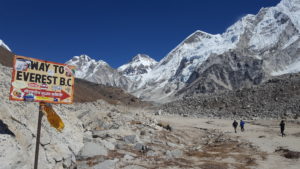
Duration: 15 Days
Difficulty: Strenuous
Highest point: 5,364m
Engaging highlights: Not only will you experience a cultural immersion like no other – the rich Sherpa culture and their friendly nature –, you will also witness the impressive Khumbu glacier and the breath-taking views over Mt Everest from the viewpoint Kala Patthar. Plus the experience of being at Base Camp.
If you think you’re not yet ready for the Everest Base Camp trek, Gokyo Valley might be an excellent warm-up for you. It is a more peaceful trek and leaves room for you to appreciate the scenic mountain views and beautiful glacial lakes.
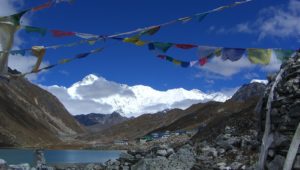
Duration: 15 Days
Difficulty: Moderate
Highest point: 5,480m
Engaging highlights: Indulge in the luxurious Sherpa culture while travelling through the scenic trails leading to Gokyo village. Enjoy the steep but rewarding hike up to Gokyo Ri to admire the beauty of the largest glacier in the Himalayas – the Ngozumpa glacier – and Mt. Everest, as well as other mighty neighboring peaks.
Trek in the Himalayas and take on a scenic walk along the trails to enjoy an alpine exploration. The ring of beautiful mountains surrounding the path is enough to catch your attention. This is also among Nepal’s most popular trekking sites because of its accessibility and outstanding views.
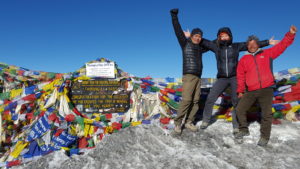
Duration: 14 days
Difficulty: Strenuous
Highest point: 5,414m (Thorong La pass)
Engaging highlights: The Annapurna Circuit is incredibly varied and provides a combination of spectacular mountain scenery and a scenic snow-capped mountain view. This trek it boast of its dramatic deep gorges, high mountain passes (Thorong La pass), Buddhist temples and picturesque villages.
This trek requires some effort for you to get close to the beautiful snow-capped mountains of Nepal. The best part of it all, you can marvel at the beautiful sunrise over the Langtang range every morning.
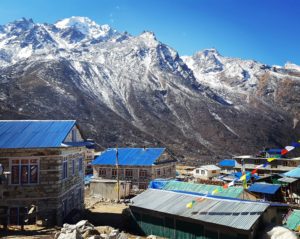
Duration: 10 Days
Difficulty: Moderate
Highest point: 4,773m (Kyanjin Ri)
Engaging highlights: Once you reach the valley, you will witness the Tibetan life and culture like no other, as this area is home to ethnically diverse people: the Tamangs, Yolmus and Bhotias, who originated from Tibet. Indulge in the beauty of the mountain peaks and sunsets every night, especially at Langtang village and Kanjin Gompa.
The Tihar Festival is Nepal’s second biggest festival. Tihar is also known as the Festival of Light, or Diwali, as thousands of candles and lanterns are lit in honor of Laxmi, the Goddess of Wealth and Luck.
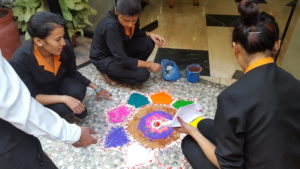
The festival typically falls between the middle of October to mid-November. Tihar lasts for five days and is an amazing look into Nepal’s culture. The first day of the festival is for worshipping crows while the second day is for honoring dogs. On the third day, Nepalis honor Laxmi by making their homes as bright as possible. Visitors will be dazzled by the numerous oil lamps and candles scattered on doorsteps and roofs. The fourth day of Tihar is for honoring cows. The fifth and last day of the festival sees men and boys receiving the Tihar Tika to ensure long life. Meanwhile, women and girls receive gifts from their brothers and promises of protection.
Another Nepalese festival that should not be missed is the Tiji Festival of Upper Mustang. The three-day holiday celebrates Dorjee Sonnu’s victory over Man Tam Tu, a cruel creature that fed on man and caused droughts and storms. It is believed that Dorjee Sonnu is an incarnation of Lord Buddha.
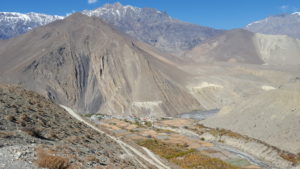
Tiji comes from the word “Tempa Chirim,” or “Prayer for World Peace.” People from all over the world travel to Lo Manthang to see the monks of Choedhe monastery perform the festival’s ritual dances.
The best travel guide for Nepal will tell you that the search for the divine is alive and well in the country’s celebration of the Mani Rimdu Festival in Tengboche. Mani Rimdu is 19 days of sacred ceremonies aimed to empower believers. The holiday culminates in a public festival that lasts three days. During Mani Rimdu, Tibetan communities and local Sherpas gather and celebrate the holiday with Nepal’s monastic community.
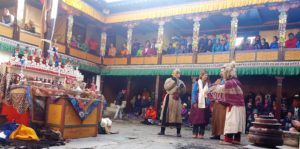
Mani Rimdu is celebrated on the first day of the Tibetan lunar calendar’s 10th month, so it usually falls sometime between mid-October to the middle of November. The festival commemorates the introduction of Buddhism by Guru Rinpoche. Sand mandalas, fire offerings and dances dominate the celebrations, with the current Rinpoche bestowing empowerment and the sacred pills for long life to believers and visitors.
According to a travel guide of Nepal, the country caters not just to experienced mountain climbers but to novices as well. Beginners can also experience the heady thrill of scaling an impressive summit by climbing one of the country’s most popular trekking peaks, Island Peak. Also known as Imja Tse, Island Peak is located in the Everest and Khumbu region.
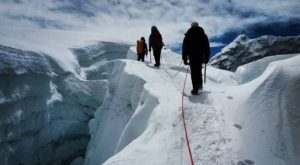
Duration: 20 days
Highest point: 6,189 m
Engaging highlights: The climb typically begins with a pre-climb trek starting from Lukla, the region’s gateway. Trekkers will follow a trail that goes through dense oak, pine and rhododendron forests to Namche Bazaar. This is a necessary stop to enable travelers to acclimatize gradually to the high altitudes whilst trekking up the Khumbu Valley, before reaching Island Peak. It combines very well with the Everest Base Camp trek.
This is Nepal’s highest trekking peak. For those with moderate mountain climbing experience, trekking to the top of Mera Peak can be just the thing to make your Nepal trip one of the best vacations of your life. The climb is a challenging one because of the elevation although the climbing is straightforward.
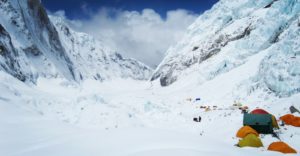
Duration: 19 days
Highest point: 6,476m
Engaging highlights: You will be amply rewarded once you have reached the summit and see the astounding views of the Himalayan Vista. From there, you can see the peaks of Cho Oyu, Everest, Kanchenjunga, Lhotse, and Makalu. If that’s not incentive enough, the trek to the top would also have you passing through the breathtaking wilderness of Nepal and getting you immersed in local culture along the way.
Hardcore climbers can try pitting their skills against Mt Ama Dablam, one of the world’s most iconic mountains. Located in the heart of Everest’s Khumbu region and about south of Mt. Lhotse and Mt. Everest, Ama Dablam is also one of the most stunningly beautiful mountains along the famous trekking paths towards the Everest Base Camp. Going on an expedition to Ama Dablam would require extensive planning and preparations.
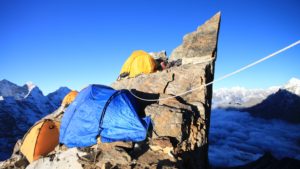
Duration: 26 days
Highest point: 6,856m
Engaging highlights: Ama Dablam lies directly above spectacular Tengboche Monastery and is mostly ascended through the southwest ridge path. Mountaineering purists would definitely enjoy the challenge of rock and ice climbing in order to reach Ama Dablam’s peak.